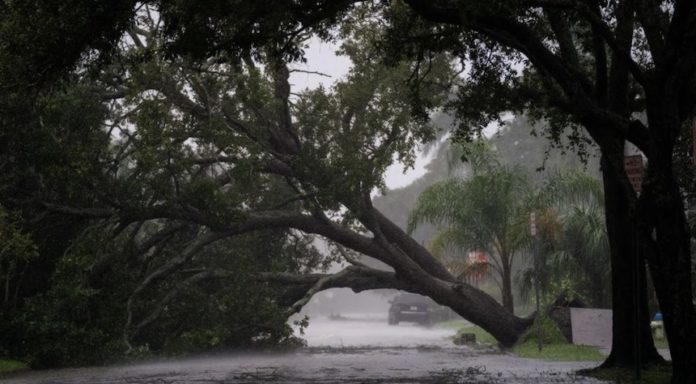The National Hurricane Center upgraded Ian from a hurricane yesterday morning to a tropical storm. Although the hurricane is now considered weaker, it will still produce strong winds, heavy rains, and storm surges in Florida and Georgia.
At 8 a.m., September 29, the storm was moving northeastward with maximum sustained winds of 65 mph. It is currently heading towards Orlando.
NHC reported this morning that the water levels along Florida’s west coast continue to drop, but there is still a danger of a “life-threatening hurricane surge” along the coasts of northeast Florida, Georgia, and South Carolina.
According to the NHC, tropical-storm-force winds are likely to spread northward through the aforementioned regions until Friday. “Life-threatening catastrophic flooding will continue to occur today in central Florida.”
The state’s northern section, southeastern Georgia, and eastern South Carolina will also be subject to significant flooding.
Record-breaking hurricane causes catastrophic damage
Ian, the fourth-strongest hurricane to hit Florida in record time, is still causing havoc. It has left more than 2.5 million people in darkness. Many are believed to be dead.
Lee County Sheriff Carmine Marceno said on Thursday that “I certainly know the fatalities in the hundreds,” which indicates that there are thousands of people still waiting to be rescued.
On Wednesday, a Category 4 hurricane battered southwestern Florida with 150 mph winds accompanied by a strong storm surge.
The storm’s center came ashore approximately 100 miles southeast of Tampa, the last place that was directly affected by a hurricane in 1921.
The surge reached new heights and flooded vast swathes of land, destroying entire houses.
The storm surge in Fort Myers was 5.8 feet. This is 2.44 feet more than it was during Hurricane Gabrielle in 2001. Fort Myers Beach’s storm surge was strong enough that it swept away the trailer for the Lee County Sheriff’s Office temporary outreach center.
The surge was also reported to have been accompanied by destructive waves along the southwest Florida coast, from Bonita Beach to Englewood.
Lower-level emergency rooms were flooded at the Fawcett Memorial Hospital, Port Charlotte, Florida. Winds reportedly ripped the roof of the ICU. Christopher Shannon captured some of the damage. He said that the storm had “clobbered the area”.
Inundación en el Hospital HCA Florida Fawcett en Port Charlotte por el paso del Huracán Ian. #MoluscoNews #ElMolu🎧
(🎥 Christopher Shannon – FB) pic.twitter.com/RHQqitmJQN
— Molusco (@MoluscoPR) September 29, 2022
Gov. Ron DeSantis (R), noted that some people are still in high-risk evacuation areas. They have been recorded and there will be a response. However, first responders will wait until the storm passes to allow rescue efforts to proceed safely.
Hurricane Ian left a path of destruction in southwest Florida, trapping people in homes, flooding streets and buildings, and knocking out power across the region.
The storm is one of the strongest hurricanes to ever hit the United States. https://t.co/RuksxwL7f8 pic.twitter.com/eyYCnmq4lT
— The Associated Press (@AP) September 29, 2022
Officials from Collier County claim that the roads to Naples, Florida are blocked by high tides and water.
Insane video shows just how deep the water is in Naples, Florida from #HurricaneIan.
The Naples Fire Rescue crew grabbing their gear as flash flooding submerged ambulances and firetrucks in feet of water. pic.twitter.com/WV1HbR8Ss3
— FOX Weather (@foxweather) September 28, 2022
Although their facility was completely submerged, Naples Fire-Rescue continues to assist those who are in dire need.
Major flooding occurred in parts of Kissimmee south of Orlando last night.
Holy cow. Major flooding in Kissimmee. @WFTV #Ian pic.twitter.com/nE6PMzvPoJ
— Nick Papantonis WFTV (@NPapantonisWFTV) September 29, 2022
The economic impact of the flooding and wind damage could be even more significant than the loss of lives, homes, or memories. Estimated reconstruction costs will amount to $258.3 trillion. The insurance industry could lose between $20 billion to $40 billion.


